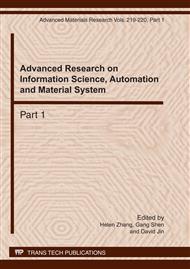p.1149
p.1153
p.1161
p.1165
p.1170
p.1174
p.1178
p.1182
p.1186
Modeling and Simulation of PHEV Regenerative Braking Test Platform
Abstract:
In order to recycle regenerative braking energy, we built the PHEV regenerative braking test platform with model design concept, based on the parallel hybrid structure. We proposed a regenerative braking control strategy under parallel braking force distribution, and established the mathematical models for main elements of the platform. In order to confirm the performance and the operational reliability of the platform, simulation models of the regenerative braking system were built in MATLAB/Simulink by combining the test data with mathematic models. We chose universal NEDC drive cycles for simulation, and the results indicated that the regenerative braking energy was effectively recycled. The structure and control strategy of regenerative braking test platform was proved to be rational.
Info:
Periodical:
Pages:
1170-1173
Citation:
Online since:
March 2011
Authors:
Keywords:
Price:
Сopyright:
© 2011 Trans Tech Publications Ltd. All Rights Reserved
Share:
Citation:


